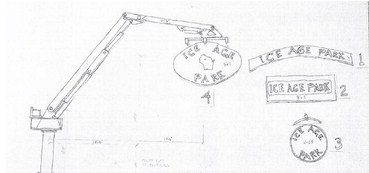Building Fertility: Field Trial on Nitrogen Efficiency


Last year you may have read an article about our local farmer-led watershed group, the Eau Pleine Partnership for Integrated Conservation (EPPIC), presenting a Nitrogen Use Efficiency study of corn silage at a farm in Colby. The NUE program was started in 2021 by UW Extension and Discovery Farms to conduct field research with, and for, farmers for on-field research of water quality and managing field fertility. The NUE project helps set up trials that evaluate nitrogen management practices in cropping systems. With the trial last year we wanted to find out the performance of the corn silage with different rates of nitrogen applied, and if there is an advantage or disadvantage (for nitrogen efficiency, crop performance) using conservation implemented practices of no-till, terminated cover crop, and interseeded companion crops. The results from the trial revealed surprising results: that corn had similar, if not better, performance with reduced nitrogen. That winter, the farmer who hosted the trial came to my office armed with a pen and notepad, and said “we are doing this again.” And that is exactly what we did with some additions; to see if specific agronomic practices can create efficient nitrogen use, especially when it is limited. The trial was set up as thirdyear corn (meaning it was corn silage for three consecutive seasons) with two plots made up of three strips (Table 1), each with a different agronomic practice: no-till, no-till with terminated cover crop, and no-till with terminated cover and inter-seeded companion crops. Each plot received fall-applied manure (6000 gal/a), 3 gal/a of 5-20-5 at planting, but one of the plots continued with a full nitrogen program; applying 20 gals/a of 28% at planting and 20 gals/a of 28% at V10 (Y-dropped). It was 169 credits (plot A-C) of N applied versus 123 credits (plot D-F) of N. To make things even more interesting we added a strip (Q) that didn’t get any fertilizer (no starter, no side-side dress, no-nothing.) That “no-nothing” plot had only the fall applied manure and the no-till to rely on for it’s fertility needs. To track each plot’s/strip’s progress we sampled pre-plant, pre-side dress, and preharvest soil nitrate tests, and harvested silage samples (2 samples/strip) analyzed for yield (wet and dry matter ton/a), feed quality, and nitrogen use efficiency.
If the so-called “soil health” concept was right, we should see nitrogen produced, on its own, in the soil, be more accessible with the assistance the companion crops, as well as be released into the soil by terminated cover crops. Throughout the year the plots were nearly identical, but the “no-nothing” plot was looking a little shorter than the rest, but still plenty green. As a matter of fact, the plot was vibrant and the nicest looking corn in the area.
Early predictions amongst collaborators were expecting good results from the reduced nitrogen plot, but none of us expected how well it turned out: yields were statistically identical (Table 2). Wet ton yields generally differed 1-2 tons/a, and Dry Matter (DM) was even closer, 0.4-1 ton/a. Where we do see significant differences, however, is the efficiency of nitrogen used, with reduced-nitrogen plot boasting significant values that were 20% better than the full-nitrogen plot, and with better feed value as well. Not surprising, to me at least, was the advantage the interseeded companion crops gave the corn silage in each plot, with top yield marks, feed value, and very high nitrogen uptake. Strip Q, the no-nothing plot, stole the show with results that exceeded expectations. When compared to the best-value in each category, it was only -5 tons/a on wet yield, -1.2 DM/a, had the best NDFD30, and a staggering 242% nitrogen use efficiency. Yes, the yield was lower, but not at any severe amount. The corn only had 54 credits of nitrogen from the fall applied manure to work with, but yet it managed to pull 77 extra credits of nitrogen out of the ground.
Looking at the performances of the corn silage with limited nitrogen, for the second year in a row, it shows us conservation implemented practices can bring more productivity to nitrogen management. Cover cropping after harvest or interseeding companion crops in season is critical for long-term minimum-till/notill operations to stimulate the soil profile from compaction, store nutrients, and reduce surface runoff. With limited interaction of diverse roots and the presence of residue, there is a lack of soil aggregate development. Soil aggregates encourage enhanced root growth, more nutrient access, elevated microbial activity, better water management, and more oxygen.
Everyone can read, watch, or hear someone explain the benefits of minimizing tillage and integrating cover crops to their land management, but almost never provide any explanation, other than “it’s for soil health.” But when we put these practices to the test, we find that it’s building more than soil; it’s building ‘more’ so the farmers ‘need less.’
The Soil
Sound-Off


